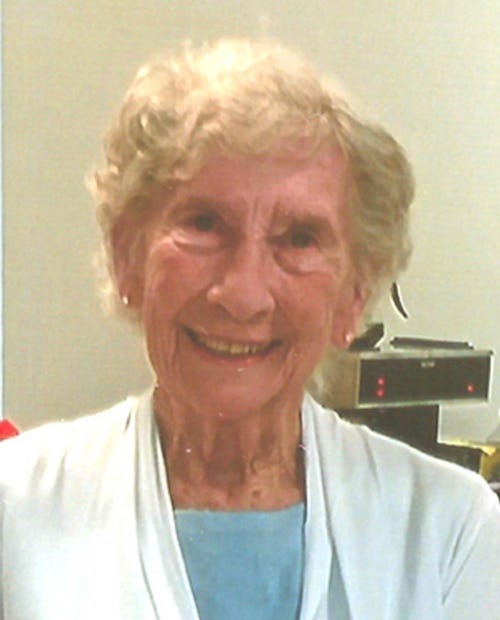
Grandma Gibson, my maternal great-grandmother, lived on the Santa Rosa-Okaloosa county line, literally. One half of her house was in one county; the other half in the other county. The community was called “Old Canoe” and had a very small church with a cemetery adjacent.
Even when I was a child, this old log house held me in awe because of its uniqueness.
The kitchen was a very large room connected at one time by a long covered walkway to the bedroom/living area, another large room. The kitchen was actually separated from living quarters — as in many old homes — due to potential fire hazards.
Adding to its uniqueness, it was in disrepair even as I remember it. The long walkway between the two sections was gone; the “between” area had become part of the yard.
The kitchen had a huge fireplace at one end. The fireplace still held the frame and hooks that had once held the iron cooking pots and kettles where the family’s meals had been prepared. At times it was the only heat for the room.
By the time I came along, a wood burning cook stove had been installed in the opposite end of the kitchen where the meals were prepared, and it was sometimes used for heat on the coldest of days. Uncle Jim cut the firewood from surrounding woods.
At the other end of what was once the walkway, another large cavernous room known as “the living area” had huge beds and chairs. Everyone slept in this one room.
Privacy was almost nonexistent. At night a sheet was hung between the beds. (Perhaps that is why Aunt Eve and Uncle Jim had no children.)
The whole place fascinated me, including the family using beans for their coffee. The grinder was a small box-type about 12 inches square and 4 or 6 inches deep, with a hand crank on the side to grind the beans.
The family, mostly Aunt Eve, toted the water from a fast-running creek several hundred feet behind their house. All the family wash was done, usually once each week, on the creek's banks.
There, a sturdy bench held the gray, galvanized wash tubs and a heavy iron wash pot sat nearby. The pot was filled with water. After being scrubbed on a wash board, “white” clothes were boiled, usually with homemade lye soap, and punched from time to time with a long, sturdy stick to keep them under the water. After all the whites were taken out, if there happened to be very dirty, heavy-duty work clothes, they would also be boiled.
After the clothes were washed and rinsed two or three times, they were then hung on a clothesline to dry.
Grandma’s daughter, my great aunt Eva (Eve), and her husband, Uncle Jim, lived with her because Grandma Gibson (nee Tanner) had what we then called “rheumatism,” which we now know as arthritis. Hers was crippling, and she scooted around in a cumbersome wooden wheelchair.
Grandma, a widow who died when I was eight years old, certainly was not able to get repairs done on her house. This was the heart of the Great Depression. My aunt and uncle, who lived there long after Grandma died, either did not have the finances or the inclination to repair the rundown old home.
Although the location was beautiful, the house simply crumbled into the ground.
Today there is nothing to let you know there was once a unique family home (and family) who lived there.
Doris Melvin Kingry, retired English and Journalism teacher, was first woman elected to public office in Santa Rosa County, where she served eight years. She is a native Santa Rosan, living where her family has lived for several generations.
This article originally appeared on Santa Rosa Press Gazette: Reminisces: Grandma Gibson’s old house has fallen down
